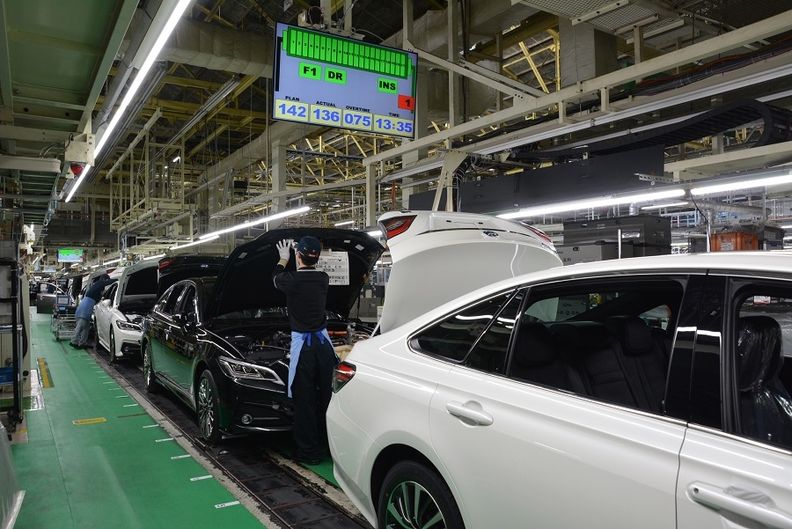After holding strong for months, Toyota Motor Corp. now expects to miss its global production target as the automaker capitulates to the double whammy of parts shortages and the pandemic.
Toyota said it expects global production to come in under the 9 million-vehicle target for its fiscal year to March 31 that the company had been clinging to since last autumn. It’s the second time this fiscal year that Toyota has dialed down its companywide production figure.
In a statement on Tuesday, Toyota said the semiconductor shortage would force it to reduce worldwide output by 150,000 units in February to about 700,000 vehicles. Toyota put the blame for the February downturn on the ongoing microchip crisis.
That, in turn, will make it very difficult to reach the company’s 9 million target.
“Current demand is very strong, therefore we were aiming for a high February production plan. However, due to the impact of the continuing demand for semiconductors across all industries, we have adjusted our production plan,” Toyota said in the statement.
“As a result of the revision, the full-year production forecast for the fiscal year ending March 31, 2022, is expected to be lower than the previous forecast of 9 million units,” Toyota said.
Global procurement manager Kazunari Kumakura said after the announcement that achieving 9 million would entail producing more than 1 million units in March alone – a very tall order.
“It will be very challenging for us to achieve the target,” Kumakura said.
Toyota did not say what the new production target would be or when it would be disclosed.
Toyota started the current fiscal year targeting 9.3 million vehicles in the 12 months ending March 31. And the company largely confounded the industry by boosting output and notching record profits despite the pandemic-microchip broadside. But over last summer, Toyota finally succumbed to the global slowdown and joined rivals in pulling back production.
Last fall, it sounded an optimistic note saying that in December all 14 plants and 28 production lines in Japan would be “operating normally” for the first time since May. But in its latest guidance, Toyota said February suspensions would hit 11 lines at eight plants in the home market.
Kumakura didn’t give a regional breakdown of 150,000-unit reduction for February. But he said roughly half of the shortfall would come from Japan and the rest from overseas.
The Japan slowdowns will affect output of such nameplates as the Toyota Prius, RAV4, C-HR and Camry, as well as Lexus models including the LS and IS sedans and NX and UX crossovers.
Toyota Motor North America also said it would lose production of approximately 25,000 to 35,000 vehicles from its North American plants in February because of “supply chain and COVID-related challenges.”
Toyota said it does “not anticipate any impact to employment at this time” because of the shortages.
Toyota’s February production plan is up from output of 668,000 vehicles in February 2021, when Toyota was racing to recover from the COVID-19 slowdowns. But the pace is still down from the 725,696 vehicles it churned out in February 2019 before the coronavirus hit.
Toyota already missed its November target of making between 850,000 and 900,000 vehicles worldwide. That target represented a downward revision from Toyota’s original goal of 1 million units in November. But the carmaker managed to produce only 821,329 vehicles that month.
For the current fiscal year through November, Toyota’s global output stood at about 5.53 million vehicles, or about 3.47 million vehicles shy of its 9 million fiscal-year production target.
Achieving the goal would mean averaging output of 867,000 units a month from December through March – an increasingly hard target, especially given February’s 700,000 forecast.
Toyota had earlier said global production would reach 800,000 units in December and 800,000 in January. But it hasn’t announced official production results for those months yet.
Despite the chip shortage, output cutbacks and stagnant sales, Toyota delivered a 48 percent surge in operating profit in its July-September fiscal second quarter.
And citing aggressive cost control and beneficial foreign exchange rates, Toyota also lifted its full-year profit forecasts to near record levels, even as it trimmed its sales outlook.- HANS GREIMEL , AutoNews.com
Larry Vellequette and Naoto Okamura contributed to this report












